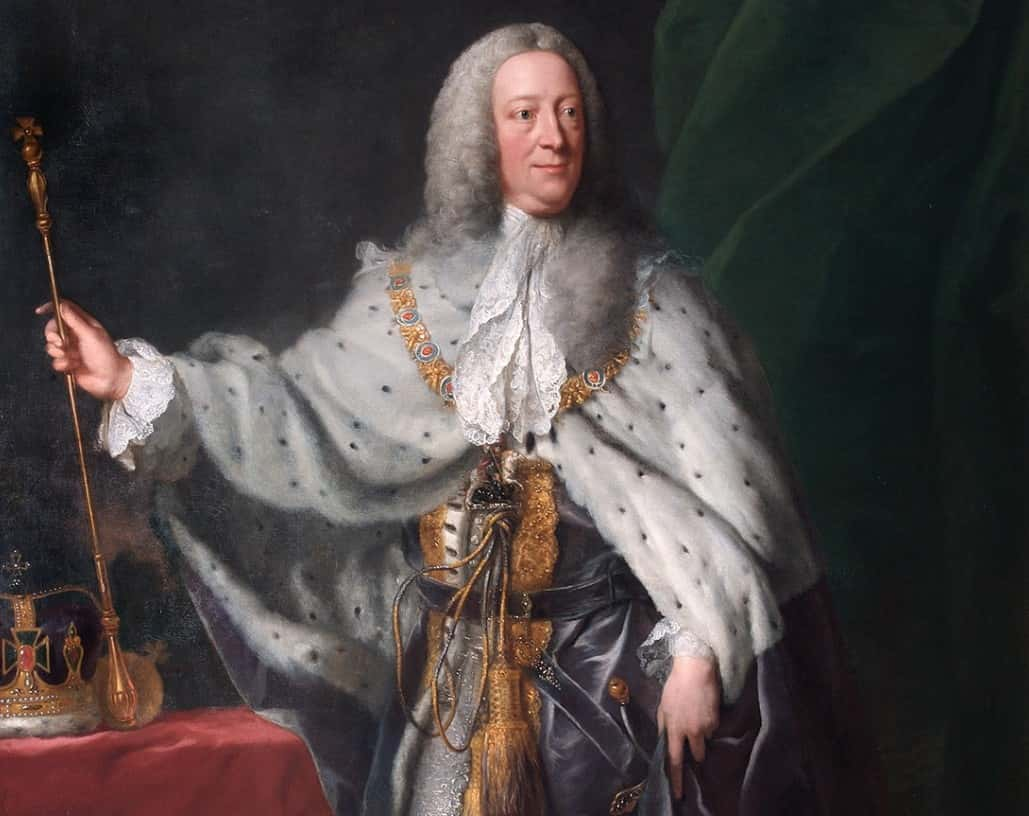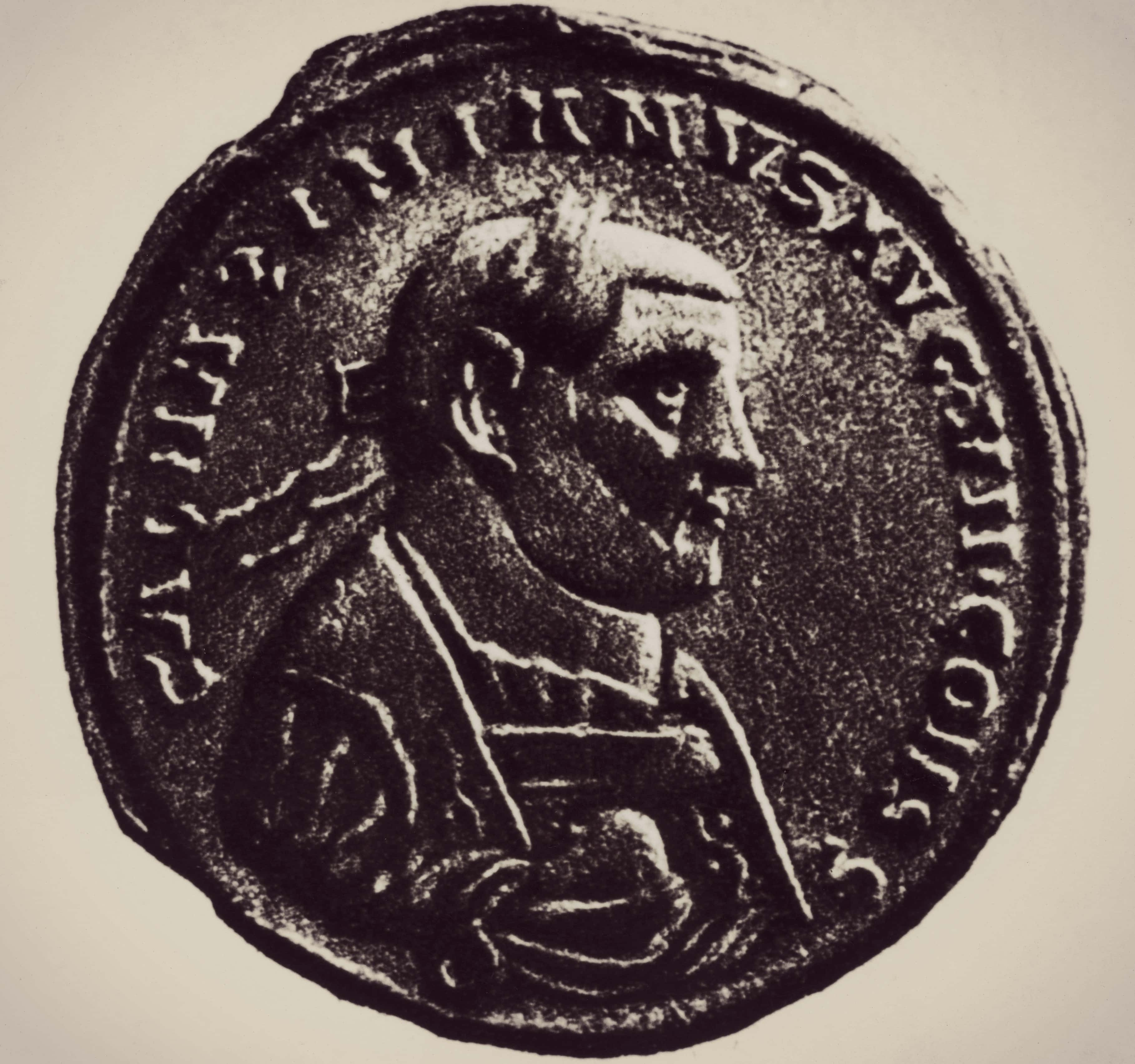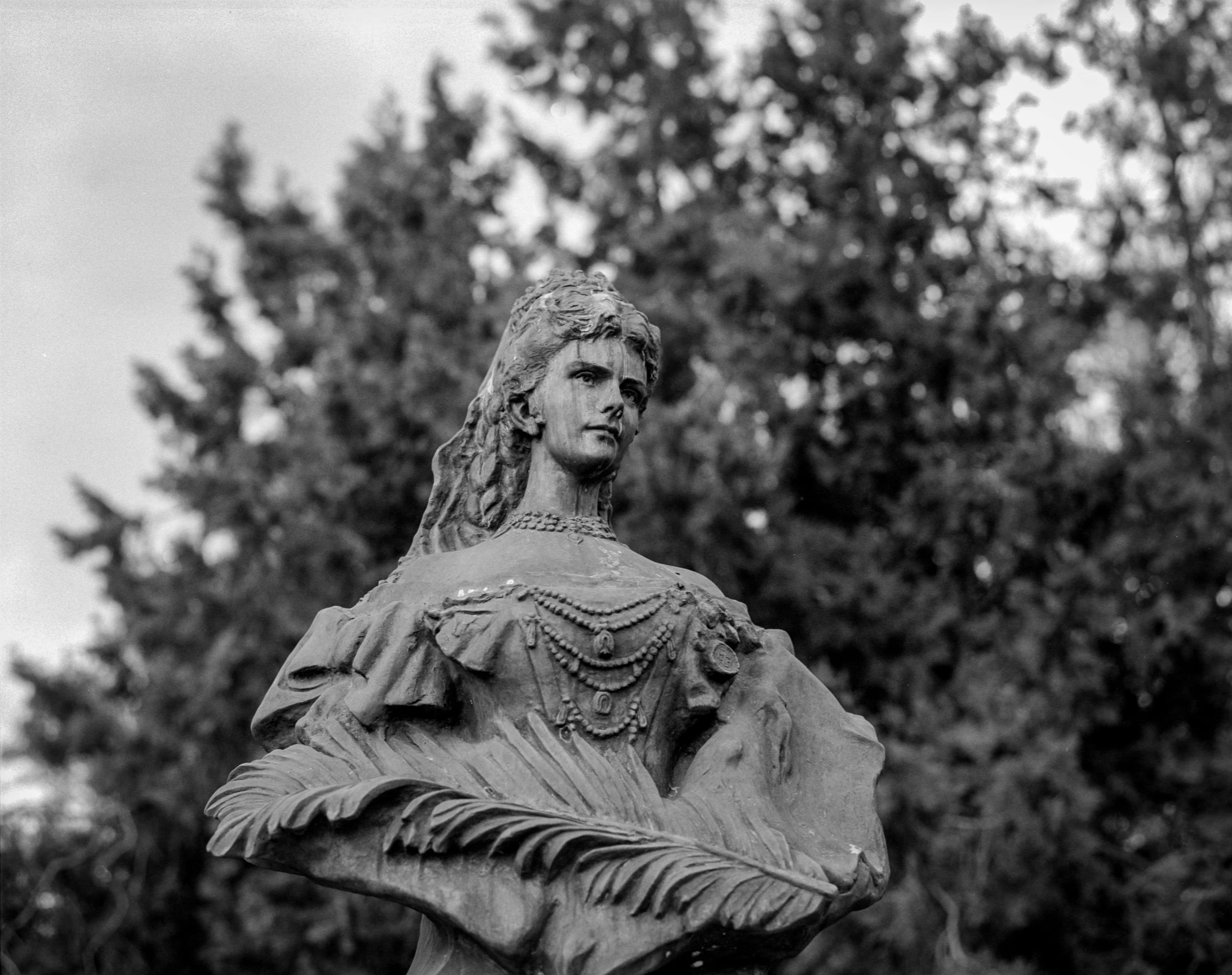“If I die a violent death, as some fear and a few are plotting, I know that the violence will be in the thought and the action of the assassins, not in my dying.”— Indira Gandhi
When a ruler dies suddenly for any reason other than old age or sickness, the world immediately begins spinning theories about the cause. Throughout history, many rulers have died or been killed under unusual circumstances, and in many cases, the true circumstances of their deaths are never known. Here are 26 strange facts about rulers who met death under unusual circumstances.
Deaths Of Historical Rulers Facts
26. Death on the Loo
At the time of his death in 1760, King George II of Great Britain and Ireland was already blind in one eye and partially deaf. One morning, he got up as usual, had a cup of hot chocolate, and went to the bathroom alone. While he was moving his bowels, he suffered an aortic aneurysm, which caused his aorta to rupture, killing him instantly.
25. Medieval Mystery
William II was the arrogant and irrational second son of William the Conqueror, and by all accounts, he was an extremely poor ruler. On August 2, 1100, William joined his younger brother Henry in a hunting party in New Forest. After the group split up, William set off with a man named Walter Tirel. As Tirel was a better marksman, William gave him two of his arrows to shoot at the stag, but instead, ended up with one of them deep in his chest. Both his brother and the French both had good reasons for wanting him dead, and theories suggest that Tirel’s “accident” was part of a conspiracy to assassinate the King.
24. Lion of the North
King Charles XII of Sweden (nicknamed the “Lion of the North” by Voltaire) had a habit of leading the country into catastrophic conflicts that wasted men and money, and lost valuable territory. These unnecessary engagements made Charles extremely unpopular with his people, and in 1718, he was conveniently killed by a bullet to the head during a siege in Danish-held Norway.
There were several aspects of his death that raised questions. First, despite their being many troops around, there was no witness to the moment of the king’s death. Second, his skull contained two holes—one on either side—which led to questions regarding which side the bullet entered and exited from. Knowing which was which would determine whether it was his own men or the enemy who fired the bullet. Third, many of the King’s companions began acting bizarrely right before his death. Prince Frederick was extremely anxious, and while suffering from a severe fever, Frederick’s secretary confessed to the murder, although he recanted after he recovered. Finally, there was the King’s surgeon’s odd dream that suggested that the bullet came from their own men.
23. Glory for Scotland
King James II of Scotland ruled for 23 years, until his death in 1460. He was a popular but ruthless king, all in the name of cementing his rule against usurpers and other threats. After the end of the Scottish War of Independence, King James attempted to reclaim Roxburgh castle for Scotland, which had remained under British control. During the siege, he was killed by a cannon. Normally, there would be nothing odd about dying by cannon fire in a battle, but the cannon that killed him was from his own arsenal. James II had imported cannons from Flanders and he was excited to see them in action. While he was standing next to one, instead of firing, it exploded, and killed him outright. So much for Flemish craftsmanship!
22. Roasted Ruler
Phalaris was the ruler of small city in Sicily in the 6th century BC, and was known as the Tyrant of Acragas. Known for his cruelty, he was fond of executing his enemies in a torture device designed by the Ancient Greeks called the ‘brazen bull’. The bull was made entirely of bronze, and was hollow, with a door on one side. Victims were locked inside, and a fire was set beneath it, roasting them to death. After 16 years of tyranny, rebels overthrew Phalaris and used his own cherished bronze bull to roast him alive.
21. Deadly Bathroom Break
The Roman Emperor Caracalla was known for being a tyrant and a cruel leader. Towards the end of his rule, he began a war against the Parthian Empire, which he never saw through due to his assassination. On April 8, 217 AD, Caracalla was travelling to visit a temple in Southern Turkey when he stopped briefly on the side of the road to urinate. He was approached by one of his personal guards, Justin Martialis, who was angry at Caracalla’s refusal to grant him the position of centurion and stabbed him in the heart.
20. Political Assassination
King Edmund I was King of the English from 940 until his death in 946. The son of Edward the Elder, he came to the throne after the death of his half-brother, and his reign was marked by constant warfare. After a relatively short reign, he was stabbed in the stomach in his own hall, at a feast celebrating St. Augustine’s Day. The murderer was an exiled robber by the name of Leofa, who was killed on the spot after the assassination. Some historians now believe that Edmund was the victim of a political assassination, but who was behind it remains unknown.
19. Maggot Food
The Emperor Galerius ruled Rome between 305 and 311 AD, and was known for his persecution of Christians. He died from a mysterious and gruesome disease believed to be some combination of bowel cancer and a flesh-eating disease called Fournier Gangrene that attacks the genitals, and allows maggots to move freely through the lower extremities.
18. No Food for You!
King Richard II ceded the crown to Henry Bolingbrook under immense political pressure, and was subsequently imprisoned in Pontefract Castle. By February 1400, Richard had starved to death in captivity, and while the official version states that he went on a hunger strike, it’s more likely that he was deliberately starved to death, or murdered at King Henry IV’s orders.

Sign up to our newsletter.
History’s most fascinating stories and darkest secrets, delivered to your inbox daily. Making distraction rewarding since 2017.
17. Death at the Tennis Court
King Charles VIII was barely a teen when he took the French throne in 1483. He died in 1498 at a tennis match. Ironically, he wasn’t even playing at the time. Charles had been a spectator at a tennis match in Amboise when he walked smack into a low doorway—the fifteenth century version of walking into a glass patio door at a party. He seemed fine, but after the game, he collapsed into a coma and died a few hours later.
16. Murder at Berkley Castle
At the time of his death, King Edward II of England had been deposed and was confined to Berkley castle. On September 21, 1327, he was murdered by being held down, and having a red-hot poker shoved up his rear. As the stories go, his screams could be heard miles away, but in an interesting twist, there is some evidence to suggest that he didn’t die then at all.
On September 24, his son and successor Edward III formally announced his death, and three months later, his funeral was held at St. Peter’s Abbey in Gloucester. At this point, the official cause of death had not been provided, and it wasn’t until the parliament of November 1330 that murder was given as the cause. The method of murder was never given, and imaginations took over, citing anything from suffocation and strangulation, to natural death and violence by others. What really happened will probably never be known, but the poker story is still widely repeated as fact.
15. Die, Damn You!
Tiberius, an early emperor of Rome, made it all the way to 77 years old, which was extremely rare in that era. Tiberius seemed to die of natural causes—except that he didn’t actually. Shortly after his entourage announced his death, he woke up. Not for long however, as his successor Caligula promptly smothered him with a pillow, this time ensuring that he was actually dead.
14. A Hot Cup of Gold
When Roman Emperor Valerian was taken captive as a prisoner of war by the Persians in 260 AD, rumors of his death began to circulate. As the story goes, the Persian ruler poured molten gold down his throat until his insides boiled and burst. Afterwards, he was flayed and stuffed with straw. The molten gold method was repeated on a Spanish governor of Ecuador in the 16th century, and inspired George R.R. Martin, for Viserys Targaryen’s death in Game of Thrones.
13. A Crime of Opportunity
Elisabeth (nicknamed Sisi) of Austria held the position of Empress of Austria and Queen of Hungary for 44 years, until she was murdered in September 1898. Unfortunately for Elisabeth, her murder was mostly a case of wrong place, wrong time. Prince Philippe, the Duke of Orleans, was the planned target, but the assassin Luigi Lucheni arrived in Geneva too late, and missed his chance. He then decided to look for the next most convenient target, and that target was Elisabeth. Lucheni found out where she was staying, went to her hotel and waited for her to come out. When she emerged from the hotel, he stabbed her in the heart. Lucheni later admitted that he had nothing against Elisabeth in particular, but that he merely hated royalty and wealthy people in general.
12. Cause of Death Unproven
The commonly accepted cause of death for Napoleon Bonaparte is stomach cancer, but evidence suggests that this may not have been the case. Autopsy reports suggested that the cancer wasn’t at an advanced stage when he died, leading to some theories that he may have died from arsenic poisoning caused by the dye in the wallpaper in his home. This theory is also flawed, as Bonaparte was obese when he died, and arsenic poisoning causes extreme weight loss. His hair samples also showed roughly the same amount of arsenic in his hair that was also present in the hair of both his wife Josephine and his son. Absolute proof of his cause of death can only be proven by testing the body tissue, but as his descendants have refused access, it will likely remain a mystery.
11. Ate Some Bad Seafood
King Henry I was on a hunting trip when he fell ill and died. Against the advice of his personal physician, he had slurped down too many sucker-faced eels, and he most likely died from the vomiting and diarrhea caused by food poisoning.
10. Boxed In
King Yeongjo of Joseon was an outstanding and long-standing Korean ruler, but his son Prince Sado was a different story. Sado was prone to violent outbursts, and was recognized by his subjects as a serial rapist and murderer. He beat and killed his servants, and raped women of the court. Yeongio needed to do something to prevent Sado from becoming his successor, but he couldn’t kill him outright. After the boy’s mother had consented to deposing him, he had Sado locked inside a heavy chest used for storing rice. Eight days later, after Sado had suffocated to death, the chest was opened.
9. Accident/Murder/Suicide?
The death of King Anada Mahidol in 1946 was first ruled an unfortunate accident. He had been a firearm aficionado, and always kept one close, so it wasn’t unusual that there would be a gun in his bedchamber. Suicide was also raised as a possibility, due to the fact that Anada had been depressed because of a breakup. About a month after his death, an inquiry ruled that Anada was murdered. Louis Mountbatten, Earl of Burma claimed that King Bhumibol, Anada’s brother, killed him for the crown. There was no direct evidence to implicate Bhumibol, and three suspects were eventually arrested, including Anada’s secretary and the page who found the body. Despite a lack of evidence against them, the trio was executed by firing squad in 1955.
8. The Original Mad King
King Ludwig of Bavaria was known for his extravagance, and to maintain his lavish lifestyle, he borrowed large sums from from foreign banks. When his debts could not be repaid, Ludwig just ignored the problem, and the government decided to have him declared insane. Days later, a few hours after going for a walk alone with only his physician as accompaniment, both men were found dead. It was officially ruled as part of a murder-suicide committed by Ludwig. The report stated that he’d drowned himself, but modern professionals have other ideas. For one thing, the king’s coat reportedly had two bullet holes. For another, the autopsy found no water in his lungs. Finally, the doctor’s body showed signs of strangulation and blows to the head and neck, suggesting that he was strangled. To this day, the cause of his death is unresolved.
7. No Blood Was Shed
During the Siege of Baghdad in 1258, Caliph Al-Musta’sim was captured and killed by the Mongols. The Caliph was wrapped in a rug and trampled to death by horses. Apparently, the Mongols did not want to shed ‘royal blood’, and chose the method as a clean yet effective way of killing him.
6. Middle Age Speeding
King Alexander III of Scotland had recently married, and was in a hurry to get to get home and see his queen. One night in 1286, he set off for Fife on horseback from Edinburgh Castle. The weather was bad, and he and his party rode through the night. At some point, Alexander got separated from his party, and went missing. The next day, he was found dead on the beach at Kinghorn, presumably from having fallen off his horse.
5. Failed River Crossing
Holy Roman Emperor Frederick Barbarossa was one of the most highly feared leaders of the Crusades. On June 10, 1190, was leading his troops into Turkey to face the Sultan Saladin when they reached the Gosku River in Turkey. Barbarossa’s advisors suggested that they find a bridge to cross in the rough water, but Barbarossa was confident that the river could be crossed on horseback. Wrong! Intent on proving himself, he was the first to plunge into the icy water, but the horse wasn’t strong enough to fight the currents. The king himself was wearing heavy armor, and was unable to swim. Frederick and his horse both drowned, and the recapture of the Holy Land was not to be.
4. Busted a Gut
We’ve all heard the old adage ‘laughter is the best medicine’, but nobody’s ever said that laughter can kill. In 1410, King Martin of Aragon died from a combination of indigestion and uncontrollable laughter. The king had just consumed an entire goose for dinner, which gave him indigestion. Can’t say from experience, but guess that’s what happens when you eat an entire goose. He went to his bedchamber, and called for his favorite jester to cheer him up. Guess they didn’t have Pepto in the 15th century. When the jester arrived, the king asked him where he’d been, and he found the response so funny that he laughed without stopping for three hours. His laughter caused him to fall out of bed, and by the time he hit the floor, he was dead.
3. Human Flambe
Charles II ruled Navarre in the 14th century and attempted to take advantage of the Hundred Years’ War between England and France for his own gain. He would switch sides depending on his needs, hence his nickname of “Charles the Bad”. According to 18th century English author Francis Blangdon, he died by basically being flambéed. Crepes Charles anyone? When Charles fell ill, his physician ordered that he be wrapped from head to toe in a brandy-soaked linen cloth. One of the doctor’s attendants was sewing up the cloth, and when she was finished, she wanted to cut the remaining thread. Not wanting to risk cutting the king by trying to cut the thread at night, she decided to burn the remaining thread off. As soon as the candle came in contact with the booze-soaked cloth, the king was engulfed in flames. Lighting food on fire is cool. Lighting a king on fire, not so much.
2. Monkey Business
Alexander of Greece was only king for three years between 1917 and 1920 before meeting his unfortunate end. On October 2, 1920, he was walking his dog when it got into a fight with a steward’s pet monkey. When he tried to break up the fight, the monkey bit him. The wounds were not initially considered serious, and were cleaned and dressed. However, the wound wasn’t properly cleaned, became infected, and caused the king to be struck down with sepsis. Had the physicians amputated Alexander’s leg he likely could have been saved, but they were afraid to react to the infection so dramatically, and they tried other means of combatting the illness. Three weeks later, Alexander died from his wounds.
1. Internal Explosion
King Herod of Judea died from an affliction called “Herod’s Evil” that involved his genitals literally rotting before getting infested with actual worms and eventually bursting. We apologize for that mental image. Some accounts say that the pain was so great that Herod unsuccessfully tried to commit suicide by stabbing himself, while others record that he did in fact manage it.




































